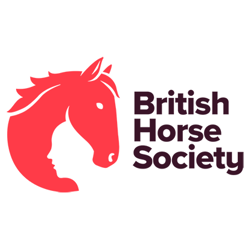| 1. Understand how to ride a horse |
1.1 Describe a horse’s way of going using the Training Scale |
Way of going to include:
- Walk, trot and canter
- Temperament of horse
- Responsiveness to aids
- Willingness to go forward
Training Scale to include:
- Rhythm, suppleness and contact
- Awareness of impulsion, straightness collection
|
Discussion |
| 1.2 Explain how a range of aids are used when riding a horse |
Range = 2 or more. Aids to include:
- Seat
- Legs
- Hands
- Riding position
- Voice
- Whip
|
Discussion |
| LEARNERS WILL BE REQUIRED TO RIDE TWO HORSES IN THIS SECTION |
| 2. Be able to ride horses in an arena |
2.1 Ride in a balanced position in all paces |
Ride to include:
- With and without stirrups
- In walk, trot and canter
Balanced position to include independent use of:
- Seat
- Legs
- Upper body
- Head
- Arms
- Hands
|
Observation |
| 2.2 Ride on the correct trot diagonal |
Correct trot diagonal:
- Sit when horse’s outside shoulder comes back
- Diagonal changed as required
|
Observation |
| 2.3 Ride on the correct canter lead |
Correct canter lead:
- Canter lead matches the direction of travel
|
Observation |
| 2.4 Ride a range of common school figures |
Range = 2 or more. School figures to include:
- Serpentine – three loop
- Circles
- Changes of direction (different variations)
- Turns
|
Observation |
| 2.5 Ride with the reins in one hand |
Riding to include:
- With stirrups
- Change of direction and pace
|
Observation |
| 2.6 Demonstrate the correct use of aids |
Use of aids to include:
- Positioning and use of legs, hands, whip
- Awareness of horse’s reaction
|
Observation |
| 2.7 Demonstrate the correct use of a schooling whip |
Correct use to include:
- Holding whip
- Changing whip from one hand to another
- Reinforcing the leg aid if required
|
Observation |
| 2.8 Ride safely |
Riding safely to include:
- Use sympathetic aids riding walk, trot, canter
- Awareness of other users of the school
- Show respect and consideration for the horse and other riders
|
Observation |
| 2.9 Review the session |
Review to include:
- The horse’s way of going
- Awareness of other riders
- Use of aids
|
Discussion |
| LEARNERS WILL BE REQUIRED TO RIDE TWO HORSES IN THIS SECTION |
| 3. Be able to ride horses over show jumps |
3.1 Prepare the horse to jump and ride in a balanced position in all paces |
Prepare to include:
- Shortening stirrups
- Canter in light seat position with a secure lower leg
- Ride the canter pace forward and back
- Single cross pole in trot with placing pole
- Canter to cross pole
- Canter to upright
- Canter to ascending spread
- Jumping four consecutive fences
Ride to include:
Balanced position to include independent use of:
- Seat
- Legs
- Upper body
- Head
- Arms
- Hands
|
Observation |
| 3.2 Ride over a course of jumps in a balanced position |
Course of jumps to include:
- Up to seven fences to a maximum height of 75cm
- Lines and track between fences
Balanced position:
|
Observation |
| 3.3 Ride safely |
Riding safely to include:
- Use sympathetic aids riding walk, trot, canter
- Awareness of other users of the school
- Show respect and consideration for the horse and other riders
|
Observation |
| 3.4 Review the session |
Review to include:
- Use of aids
- Lines ridden
- The horse’s way of going
- Awareness of other riders
|
Discussion |
